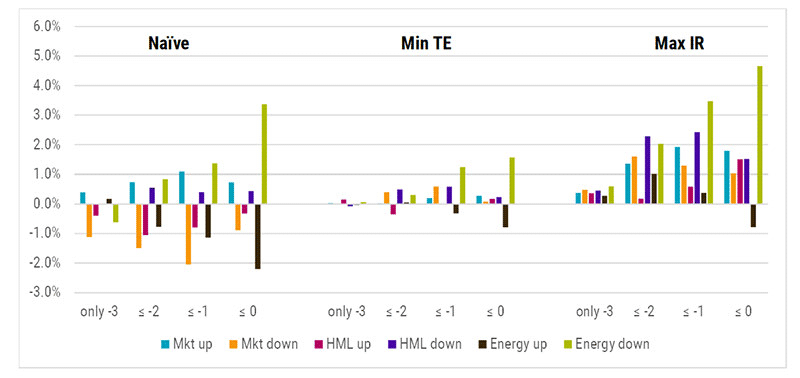Mind the gap: Effectively replacing sustainability exclusions

Sustainable investors commonly exclude the least sustainable companies, but in doing so create a gap in the portfolio. Our latest research compares various methods to replace these excluded stocks.
- Excluding unsustainable stocks leaves a gap that needs to be filled
- Naïve rescaling of the remaining stocks is inefficient, research shows
- We aim for better performance by using more sophisticated approaches
Creating a gap
When it comes to sustainable investing, common examples of exclusions include the tobacco industry, companies involved with controversial weapons and thermal coal producers. However, exclusions can also be implicit, such as constraints on the carbon footprint or ESG score of the portfolio which necessitate divesting from certain stocks that score poorly on these metrics. These exclusions result in underweight positions compared to the market portfolio, leaving a gap to be filled. In order to remain fully invested, sustainable investors must replace such underweights with overweight positions in other stocks. There are several ways to go about this, each with its own pros and cons. Since active decision making is required, sustainable investing is, by its nature, active investing; see also Blitz and de Groot (2019). The purpose of our recent research is to compare the financial performance of various methods used to replace excluded stocks.
Three approaches
The base-case, ‘naïve’ approach is to rescale the weights of remaining stocks in proportion to their market capitalizations. One concern is that this method can inadvertently bet against proven factors. Another issue is that rescaling often replaces stocks like utilities companies with heavyweight tech stocks like Apple, Microsoft, and Alphabet, introducing significant tracking error. Our first alternative approach aims to minimize the tracking error resulting from exclusions, striving to realign closely with the return of the market index. The second alternative uses the forced underweights from exclusions to buy stocks with attractive factor characteristics, with the goal of maximizing risk-adjusted returns. In the appendix to our research we also explore a third alternative, which involves replacing exclusions with highly sustainable stocks, using alternative energy stocks as a concrete example.
Methodology and findings
For our empirical analyses, we consider two types of exclusions: carbon footprint constraints and exclusions based on Sustainable Development Goal (SDG) scores. For the carbon footprint constraint, we explore reductions of 50%, 60%, 70%, or 80% compared to the benchmark index. The SDG data is drawn from Robeco’s proprietary SDG framework, with scores ranging from -3 (worst) to +3 (best). Our sample encompasses the MSCI World (developed markets) universe from January 2006 to December 2022.
"For instance, portfolios with exclusions underperformed by 2 to 4% in 2022 alone"
Our initial analysis shows that the naïve approach doesn't significantly affect long-term performance, but it does introduce a large amount of tracking error. For instance, portfolios with exclusions underperformed by 2 to 4% in 2022 alone, and over periods of two to five years, such exclusions can even lead to return differences of more than 10%. We then deploy our two advanced approaches: one minimizing tracking error and the other maximizing return. The former reduces tracking error by 50-70% for carbon constraints and 30-50% for SDG exclusions. The latter focuses on maximizing factor exposure, leading to net information ratios of about 1, signifying decent outperformances. Figure 1 compares these approaches in terms of carbon constraint and Figure 2 in terms of SDG exclusions.
Figure 1: Conditional performance of portfolios with carbon constraints

Source: Robeco
Figure 2: Conditional performance of portfolios with SDG exclusions

Source: Robeco We find that compared to the naïve approach, both alternatives are less sensitive to various market environments. The return-optimized portfolios, in particular, manage to achieve positive expected returns in almost every scenario.
Conclusion
Sustainable investing involves exclusions that require careful portfolio rebalancing. Our research suggests that a simple rescaling approach can be inefficient and introduces unnecessary risk. However, more sophisticated approaches, either minimizing tracking error or maximizing returns, can significantly improve performance. Read the Full Article
Sign Up Now for Full Access to Articles and Podcasts!
Unlock full access to our vast content library by registering as an institutional investor .
Create an accountAlready have an account ? Sign in
